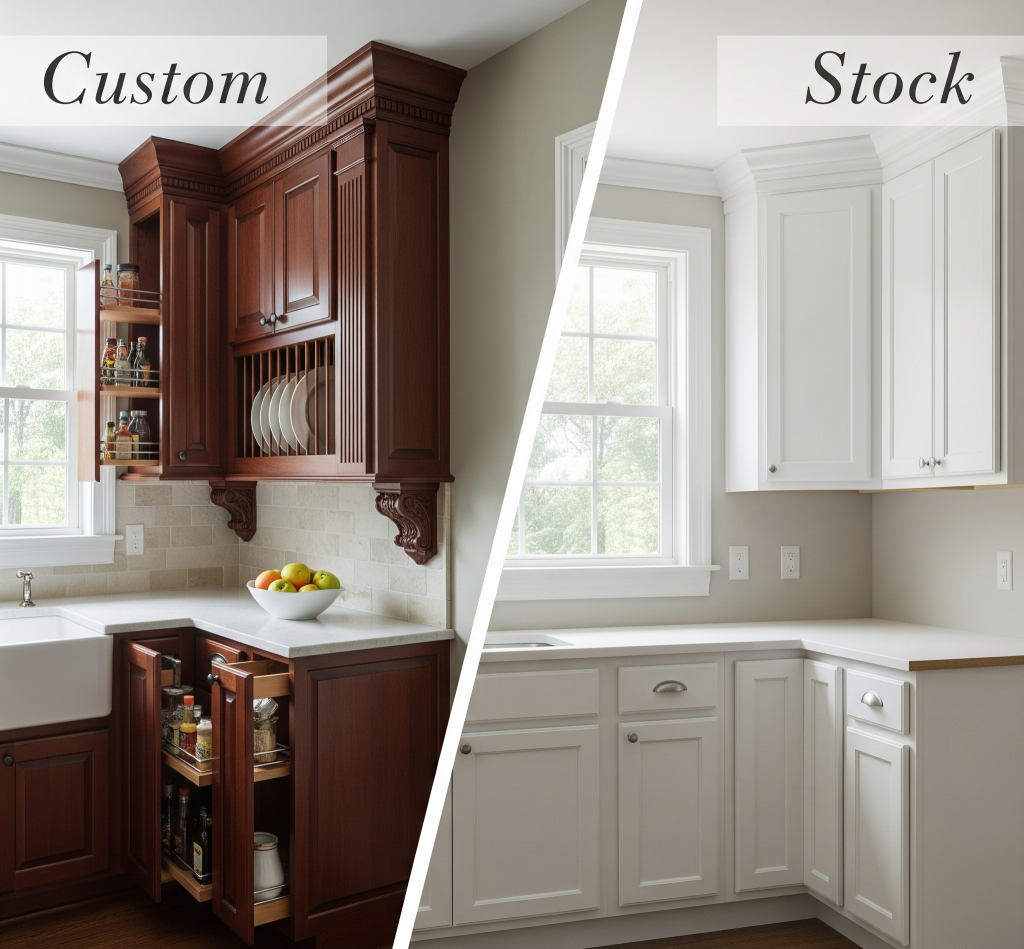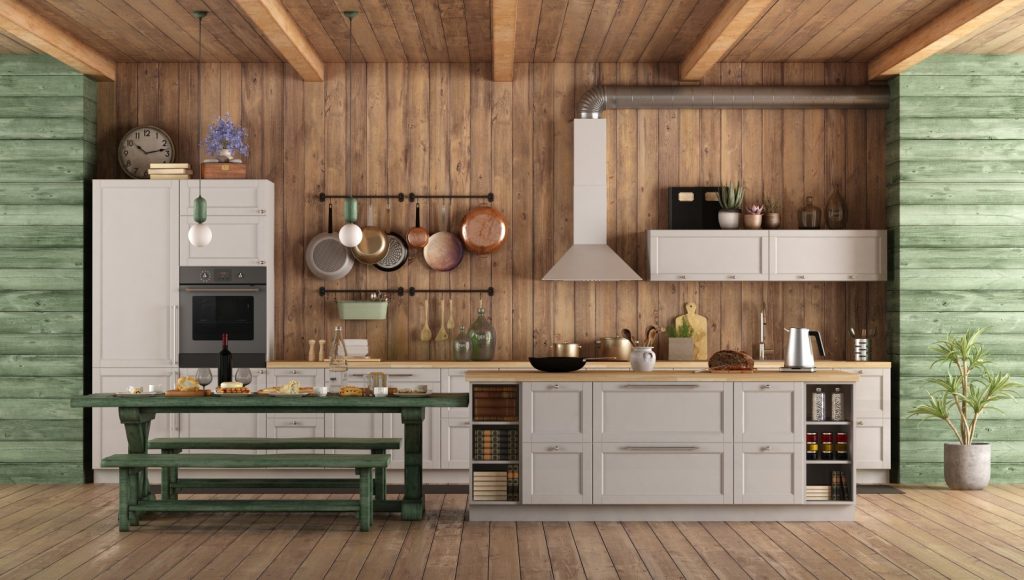One of the home’s best multipurpose surfaces is the bathroom floor. It must be safe, non-slip, warm, and comfortable underfoot, but it also needs to look good and be able to express a sense of personal style. Additionally, when selecting the best flooring for your area, consider how simple it will be to install; for example, in smaller bathrooms, stylish large-format tiles need numerous delicate cuts to blend in with pipework and sanitaryware. This Blog explains the popular bathroom flooring trends that will be at their height in 2025 and are now the top pick for any homeowner.
Bathroom Flooring Inspirations:
More than just waterproofing, modern bathroom flooring aims to create a space that is comfortable, safe, and perfect for your needs. There is an ideal floor waiting for you, regardless of your preference for earthy hues, modern textures, or fun patterns.
Let’s explore the smart, trendy, and practical bathroom flooring ideas:
Porcelain and Ceramic Tiles
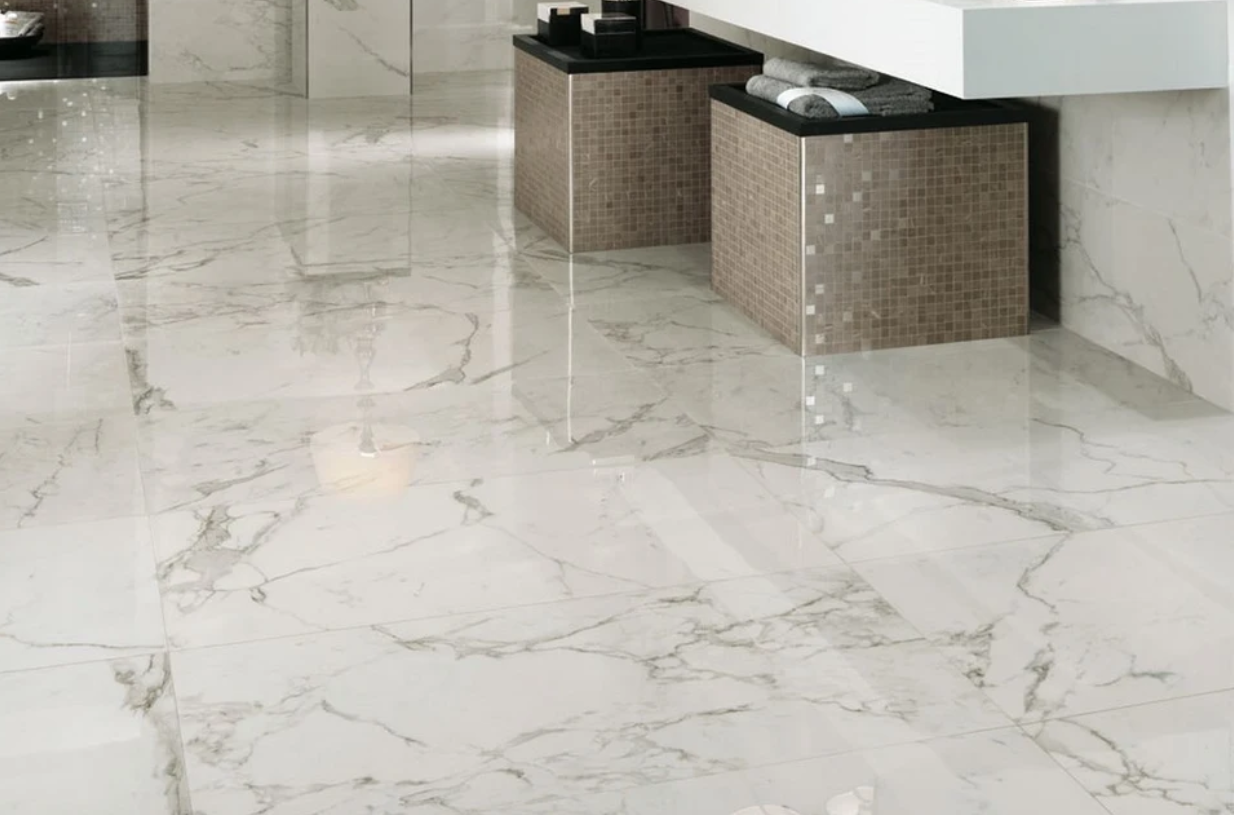
Ceramic and porcelain tiles are the preferred choice for moisture resistance and ease of cleaning. However, anti-slip coatings that improve traction are a new feature of modern tiles. They combine safety and style, are perfect for damp environments, and come in an endless array of designs.
Travertine, Slate, and Marble Tiles
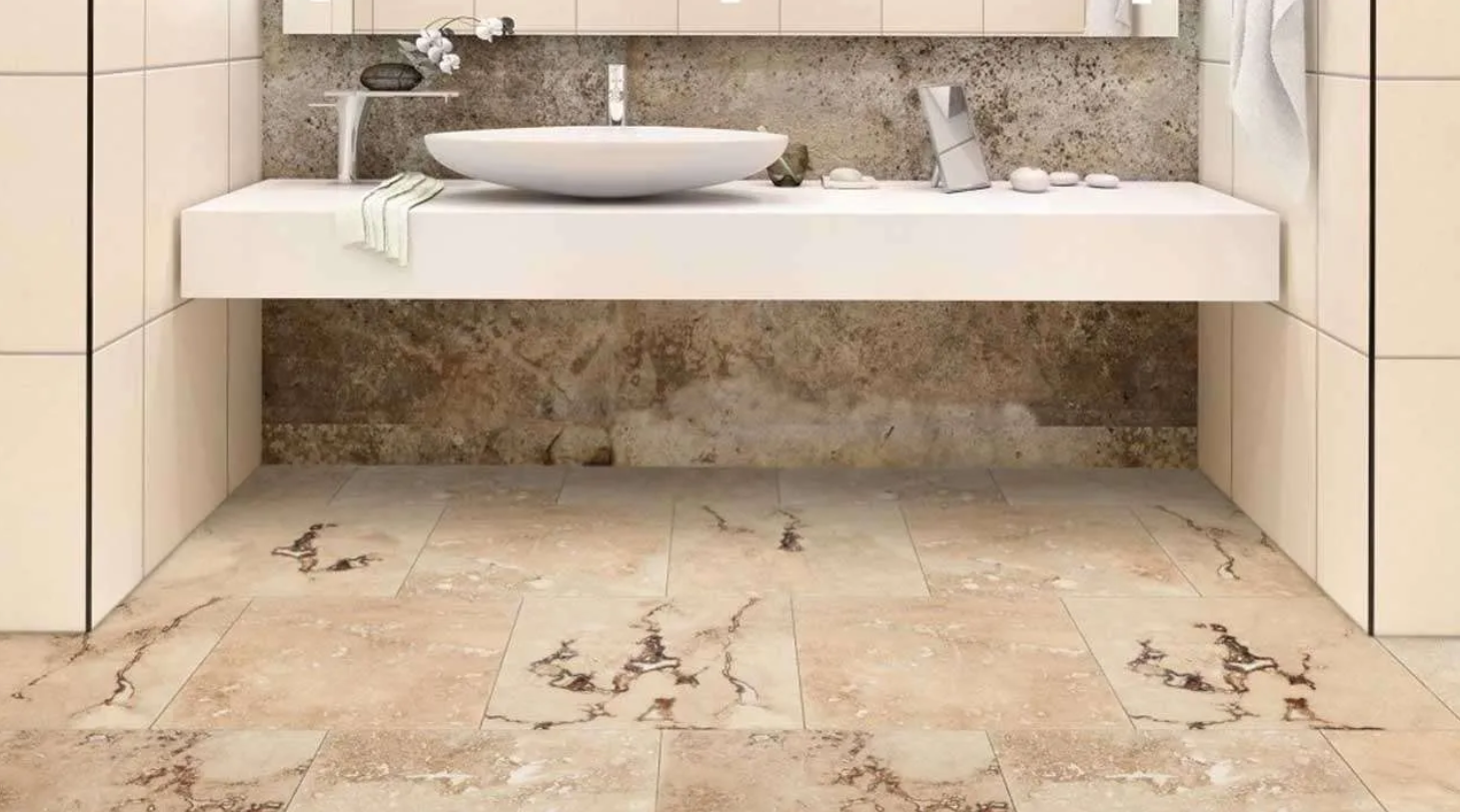
Stone tiles create a natural, spa-like atmosphere that is luxurious and calming. Travertine and slate offer organic textures that age gracefully, while marble adds elegance. Note that these stones require sealing to remain water-resistant, but the effort is well worth it if you’re looking for classic elegance.
Heated Tile Flooring
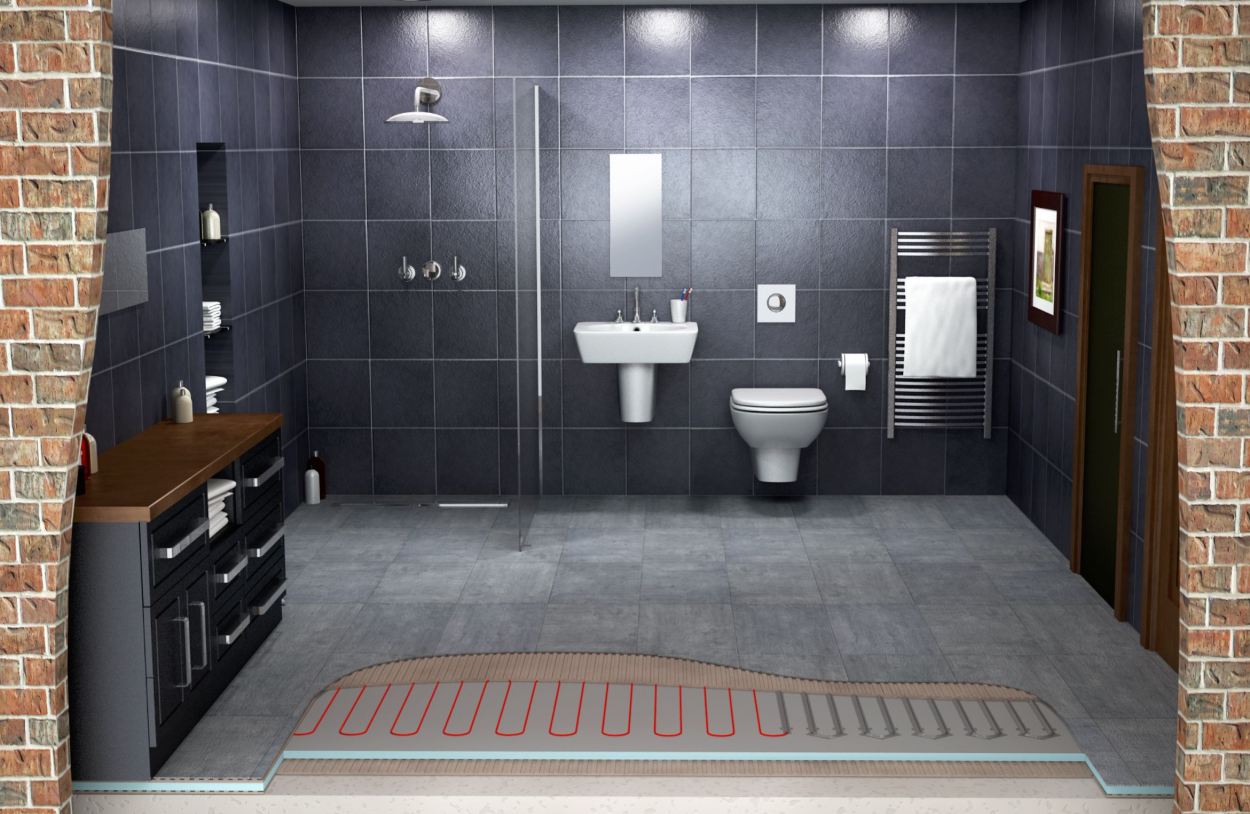
Let’s be honest—no one likes stepping onto cold tiles at 6 am Heated flooring systems fix that, adding radiant warmth beneath stone or tile surfaces. This subtle improvement feels like a real luxury, ideal for winter mornings or creating a spa-like retreat. For the ultimate in comfort and style, pair it with stone or porcelain.
Vinyl Tiles
Peel-and-stick vinyl tiles are a budget-savvy choice that doesn’t look cheap. They are inexpensive, easy to do, and come in surprisingly lifelike finishes that replicate wood, stone, or patterned tiles without requiring any special preparation or investment.
They’re also water-resistant and simple to clean. If you’re renovating on a budget, these might be your flooring soulmates.
Bamboo and Cork Flooring
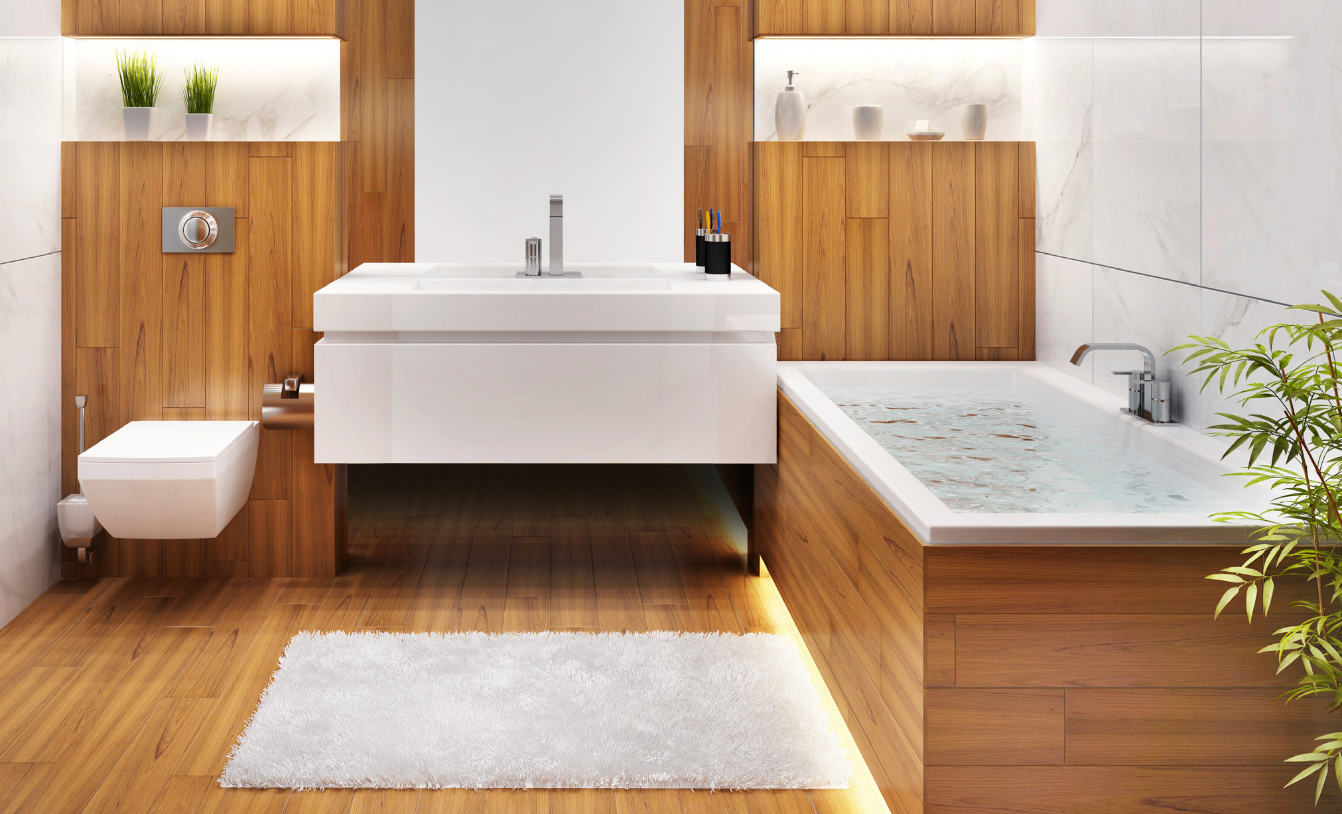
An eco-friendly, cozy, and warm substitute for cold tile or stone is bamboo and cork. While cork is soft, absorbs sound, and has inherent antimicrobial properties, bamboo is more water resistant and looks like hardwood. Both work well in family bathrooms, but to prevent damage, make sure to select water-treated, bathroom-rated models.
|
Caution! Avoid traditional hardwood or carpet in bathrooms—moisture is their worst enemy. |
Waterproof Laminate Flooring
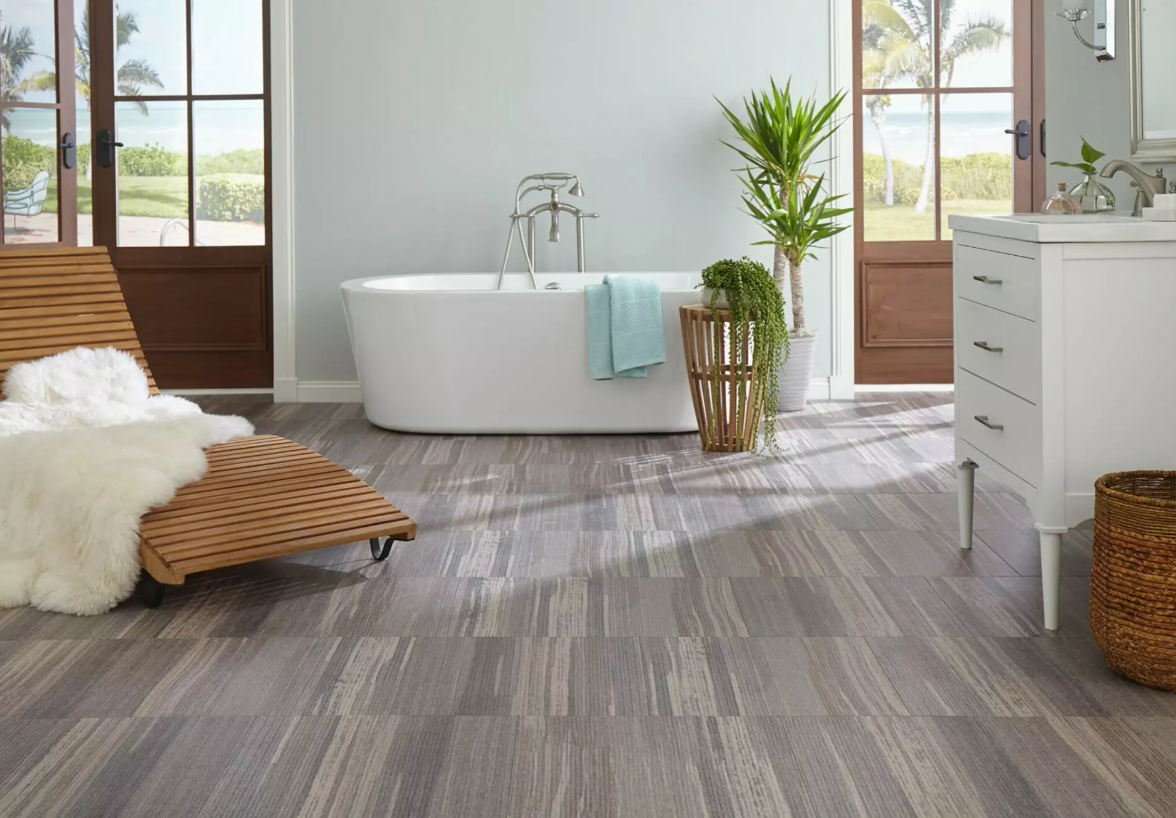
With waterproof laminate Flooring, you can have the beauty of hardwood without worrying about water damage. It is a DIY dream because it is simple to install and frequently uses a click-lock mechanism. High-traffic restrooms benefit greatly from modern options that are also resistant to scuffs and scratches. Simply read the label again; only use laminate that is rated for wet areas.
Rubber, Linoleum & Textured Flooring
Water-resistant linoleum and textured rubber flooring are examples of flooring that combines durability and functionality. These materials are extremely easy to maintain, soft underfoot, and resistant to slippage.
They’re perfect for utility-focused areas, bathrooms that are accessible to the elderly, and families. Bonus: they have unique finishes and colours that add individuality without sacrificing quality.
Stained Cement and Concrete Finishes
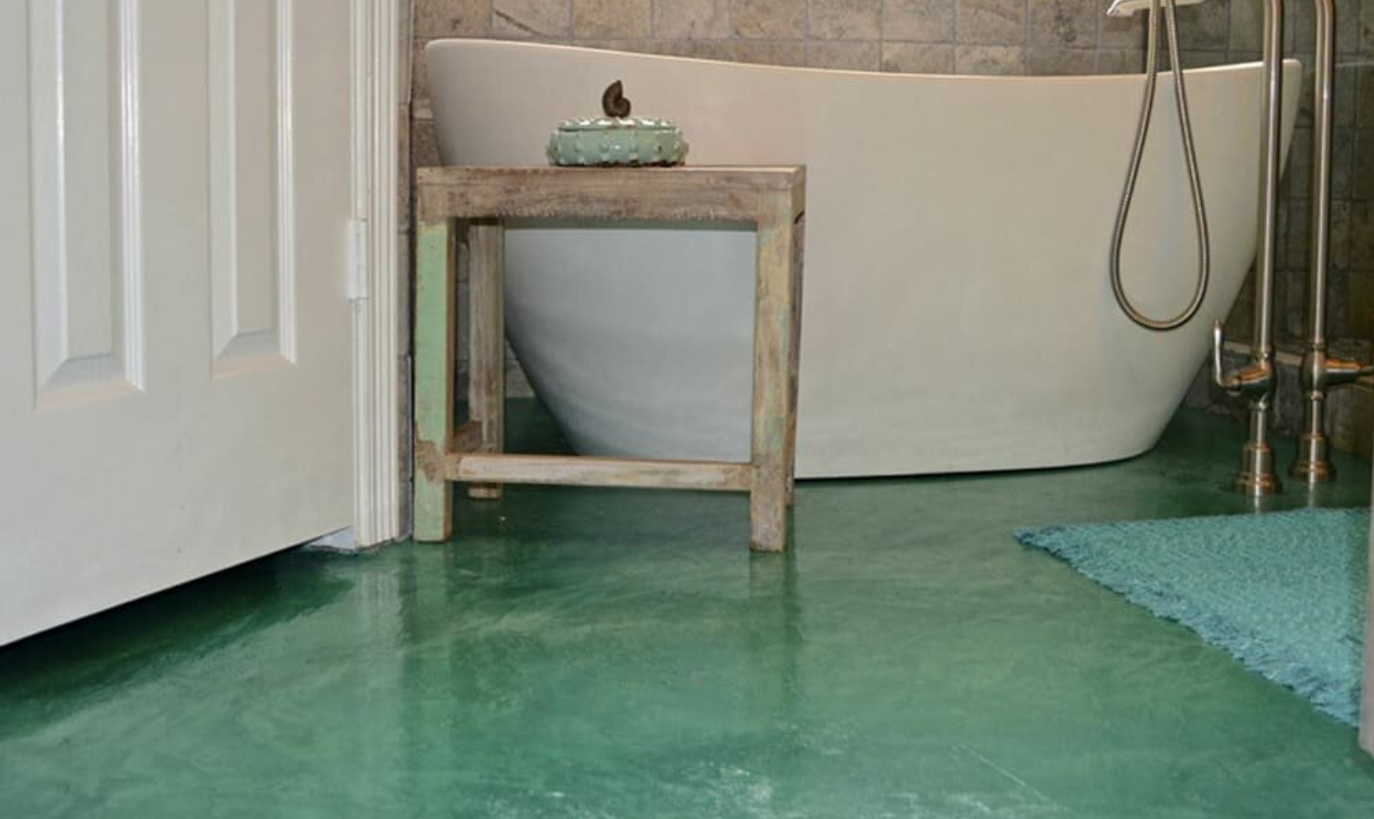
Concrete is now used for interior design, not just basements. Concrete that has been polished or stained and microcement finishes provide a seamless, fashionable, ultra-minimal, contemporary look. For non-slip properties, apply matte sealants or texture. It creates a cozy contrast with radiant heat and feels cool underfoot.
| Pro Tip: Always choose textured or matte finishes over glossy in wet areas to avoid slips, even with tiles or concrete. |
Epoxy & Resin-Coated Floors
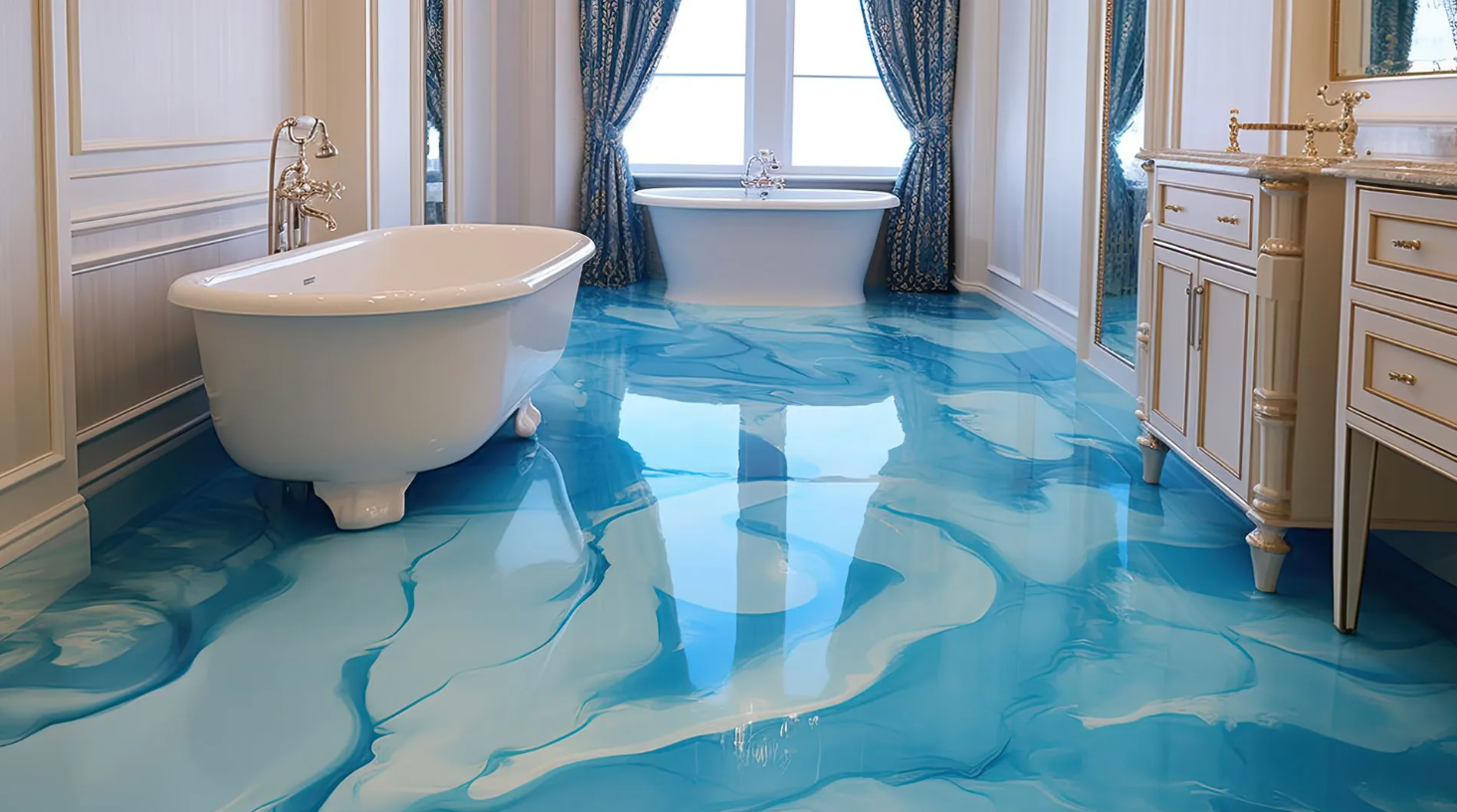
Are you looking for a smooth, shiny, long-lasting surface? The use of epoxy and resin-coated floors in contemporary bathroom renovations is becoming more and more common. They are virtually grout-free, waterproof, and antimicrobial.
| Key Takeaway! Don’t skip proper underlayment and sealing—it extends your floor’s lifespan dramatically. |
Conclusion
Your bathroom floor isn’t just a surface—it’s a statement. The right flooring ties together safety, comfort, design, and durability in one smart package. Whether you lean toward the elegance of marble, the charm of wood-look vinyl, or the modern flair of concrete, the options today are more diverse and creative than ever. No matter your style or budget, there’s a flooring solution ready to bring your bathroom to life. Just remember to match form with function, because the best bathrooms feel as good as they look. So go ahead—step into something warm!
FAQs
What’s the most waterproof bathroom flooring?
Porcelain tiles and luxury vinyl are top-tier waterproof options. They hold up against splashes, steam, and spills without damage.
Are wood floors okay in bathrooms?
Solid wood isn’t ideal, but wood-look porcelain or waterproof laminate gives you the same look with better water resistance.
What flooring is safest for kids or seniors?
Anti-slip tiles, textured vinyl, and rubber flooring are safest due to added grip and reduced slipping risk.
Can I install bathroom flooring myself?
Yes! Peel-and-stick vinyl, laminate click tiles, and some vinyl sheets are DIY-friendly—even for beginners.
How much does it cost to install a floor in a bathroom?
Depending on the material, the size of the bathroom, and whether you hire a professional, bathroom flooring installation can cost anywhere from $2 to more than $100 per square foot.


